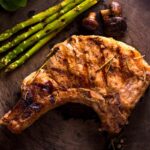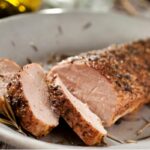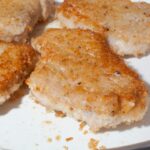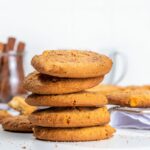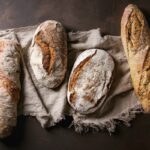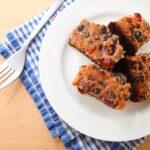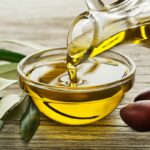Lard has almost fully disappeared from modern cooking. With its large amount of unsaturated fats, lard is often considered bad for us.
But what is lard? And what is it made of? Made from animal fat, lard used to be a popular substitute for cooking oil but it has largely fallen out of favor with chefs due to its amount of fat.
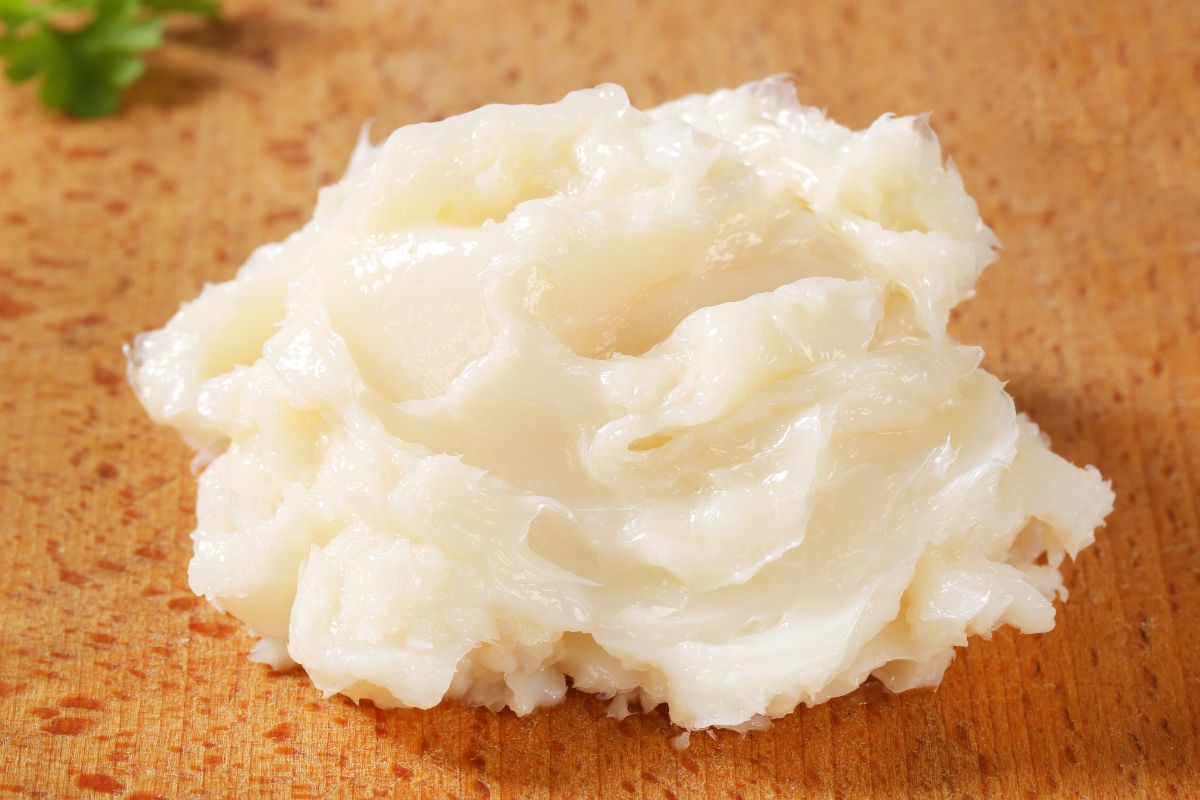
We take a closer look at lard, the different kinds of lard and how you can integrate lard into your cooking and baking.
What Is Lard?
Lard is an animal fat that is derived typically from pork. Separated from the meat, lard is 100% animal fat which is processed through rendering.
Rendering is when the fatty parts of a pig, such as the shoulder, butt and belly, are slowly cooked until the fat melts.
The liquid fat is then moved away from the meat and chilled to solidify. You can buy lard in grocery stores in tubs or large blocks.
What Does Lard Taste Like?
Similar to other solid animal fats, lard has a creamy consistency with a white texture. As lard is made from pork, it can sometimes taste slightly porky.
However, there are also odorless and flavorless lard products that are ideal for deep-frying, baking and cooking.
Different Types Of Lard
Depending on what part of the pig the lard fat is made from and the individual extraction process, there are a number of different lard types.
Rendered Lard
As one of the most popular lards, rendered lard has a mild lingering pork flavor. The rendering process involves the pig being cooked until the fat turns liquid.
It is then separated from the meat, filtered and cooled down to turn the liquid fat into a solid block.
Unrendered Lard
In comparison to rendered lard, unrendered lard has not gone through the rendering process. This means that it is plain pig fat which has been cut directly away from the meat.
As unrendered lard also hasn’t been filtered, it has a strong pork and meat taste which makes it only suitable for cooking but not baking.
Leaf Lard
Out of all the different lard types, leaf lard is a premium animal fat.
What makes it so different from the cheaper lards is that it comes from a specific part of the pig: the leaf-shaped area around the abdomen and kidneys.
This makes leaf lard especially smooth, creamy and tender which is the reason why many people use it for baking.
Plus, leaf lard is also free from the classic pork smell and taste.
Processed Lard
Processed lard is a type of rendered lard. It has gone through the melting and filtering process. In addition, this pork fat is also clarified to remove the pork flavor.
This makes processed lard especially popular with bakers and chefs who want to use the fat without the meat taste.
Is Lard A Healthy Fat?
For a long time, lard was a staple in many kitchens across the world. It was cheap and readily available everywhere.
However, when vegetable shortening was invented in the early 20th Century, the use of lard significantly decreased.
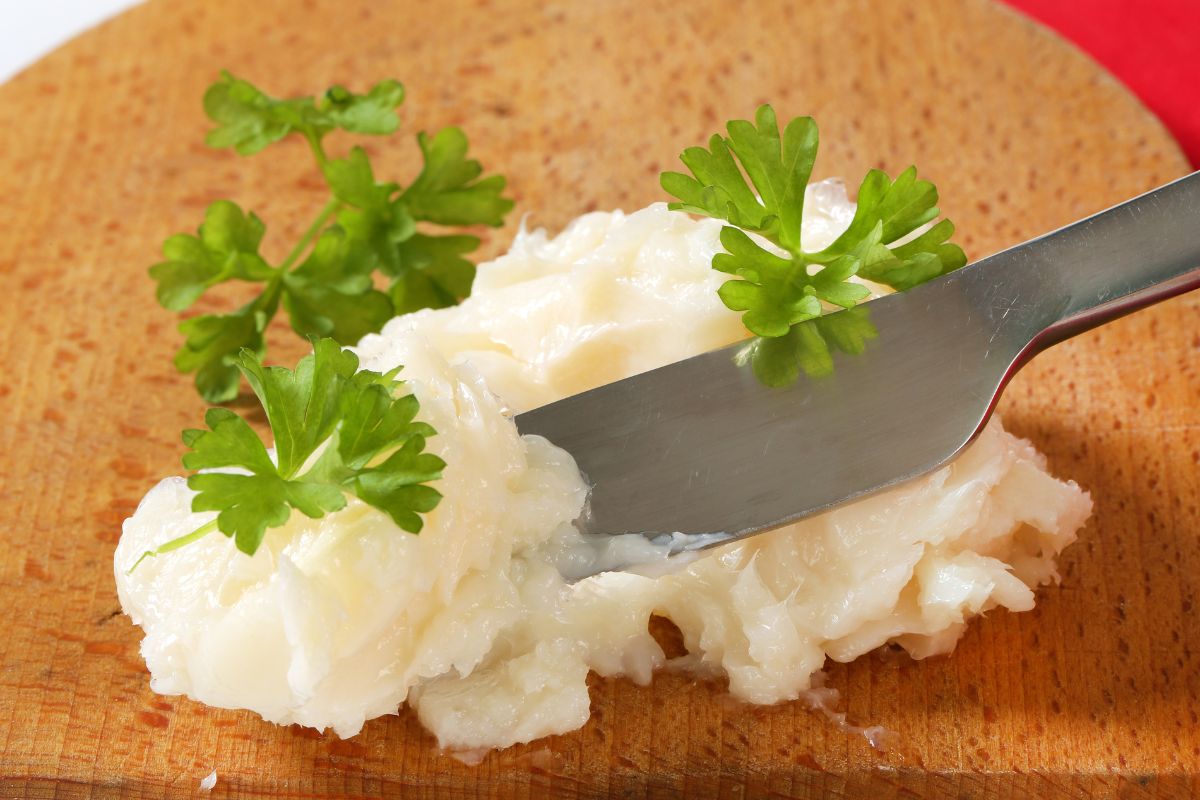
People considered this animal fat unhealthy because of its high concentration of cholesterol and saturated fatty acids.
Today, lard is seeing a revival with many cooks because it contains less saturated fat than butter and less trans fat than shortening.
This means that lard can be healthy, as long as you enjoy it in moderation in your food.
Is Lard Worse Than Butter?
Lard contains more monounsaturated fats than butter which means that it has more useful fats for our body.
However, lard and butter can vary in taste, so whether you want to use butter or lard depends on what you want to do with it.
Does Lard Make Food Taste Good?
Just like many products that contain a high concentration of fat, lard can improve the aroma and taste in your baked goods or cooked meals.
You can use it for your cakes, cookies, grilled meats, roasted vegetables and pies. Depending on what type of lard you use, you can even add lard for a little extra pork flavor.
How To Use Lard
Similar to butter, lard is extremely versatile. This cooking fat is perfect for baking, frying, sautéing, grilling and roasting.
As lard is solid, you can use it for your baked goods in the same way as you would use butter. Just a small amount of lard can go a long way.
You can spread it on your toast, grease a pan or add a cup full of lard to your skillet for a delicious deep fried meal.
From crispy fried chicken, and delicious tamales to sweet donuts and tasty biscuits, lard can make cooking and frying great fun.
Just make sure that you use the right type of lard for your food. Unrendered lard can have a subtle pork taste which is more suitable for meat-based meals than baking.
The best lard to use for baking is leaf lard because it is made from the best parts of the pig and it is filtered to ensure that there is no pork aroma left.
Final Thoughts
Lard is a fantastic cooking fat that you can use in so many different ways, from delicious fried donuts to a meaty pie.
As lard is solid, you can use it in exactly the same way as butter or other spreads.
Frequently Asked Questions
While lard has more unsaturated fatty acids than butter and is therefore considered less healthy, it also contains less saturated fat and more oleic acid than butter.
This is what makes lard an excellent alternative for butter or shortening.
Yes, olive oil is much healthier than animal lard because it contains a better balance of saturated and unsaturated fats.
However, olive oil isn’t always suitable for some foods, especially where you need a solid texture such as in lard or butter.
- How To Reheat A Cheesesteak - November 5, 2023
- What Are Three Must Have Kitchen Knives? - September 22, 2023
- How To Protect Edges Of Pie Crust - June 15, 2023

